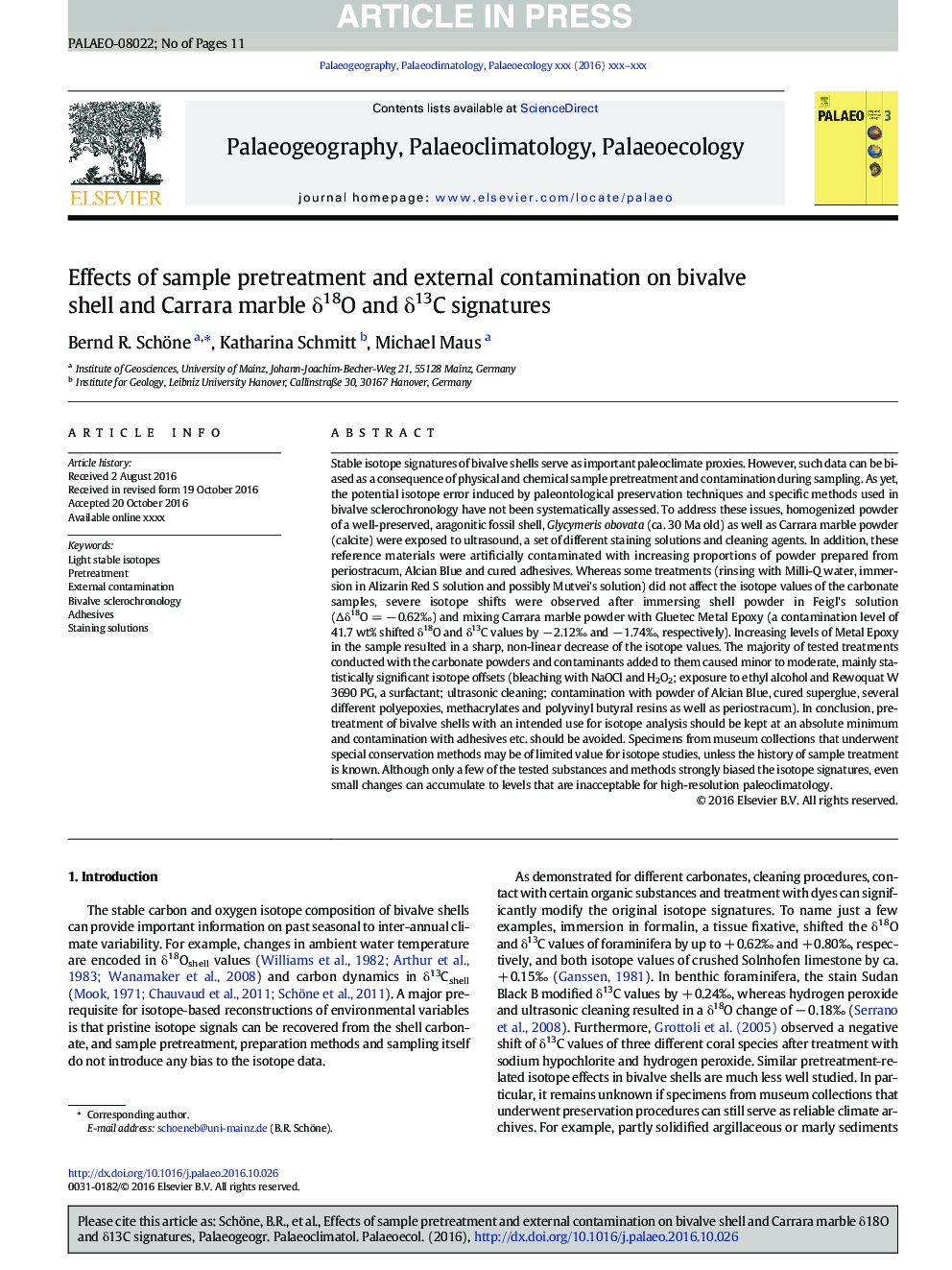| Article ID | Journal | Published Year | Pages | File Type |
|---|---|---|---|---|
| 5755657 | Palaeogeography, Palaeoclimatology, Palaeoecology | 2017 | 11 Pages |
Abstract
Stable isotope signatures of bivalve shells serve as important paleoclimate proxies. However, such data can be biased as a consequence of physical and chemical sample pretreatment and contamination during sampling. As yet, the potential isotope error induced by paleontological preservation techniques and specific methods used in bivalve sclerochronology have not been systematically assessed. To address these issues, homogenized powder of a well-preserved, aragonitic fossil shell, Glycymeris obovata (ca. 30 Ma old) as well as Carrara marble powder (calcite) were exposed to ultrasound, a set of different staining solutions and cleaning agents. In addition, these reference materials were artificially contaminated with increasing proportions of powder prepared from periostracum, Alcian Blue and cured adhesives. Whereas some treatments (rinsing with Milli-Q water, immersion in Alizarin Red S solution and possibly Mutvei's solution) did not affect the isotope values of the carbonate samples, severe isotope shifts were observed after immersing shell powder in Feigl's solution (Îδ18O = â 0.62â°) and mixing Carrara marble powder with Gluetec Metal Epoxy (a contamination level of 41.7 wt% shifted δ18O and δ13C values by â 2.12â° and â 1.74â°, respectively). Increasing levels of Metal Epoxy in the sample resulted in a sharp, non-linear decrease of the isotope values. The majority of tested treatments conducted with the carbonate powders and contaminants added to them caused minor to moderate, mainly statistically significant isotope offsets (bleaching with NaOCl and H2O2; exposure to ethyl alcohol and Rewoquat W 3690 PG, a surfactant; ultrasonic cleaning; contamination with powder of Alcian Blue, cured superglue, several different polyepoxies, methacrylates and polyvinyl butyral resins as well as periostracum). In conclusion, pretreatment of bivalve shells with an intended use for isotope analysis should be kept at an absolute minimum and contamination with adhesives etc. should be avoided. Specimens from museum collections that underwent special conservation methods may be of limited value for isotope studies, unless the history of sample treatment is known. Although only a few of the tested substances and methods strongly biased the isotope signatures, even small changes can accumulate to levels that are inacceptable for high-resolution paleoclimatology.
Related Topics
Physical Sciences and Engineering
Earth and Planetary Sciences
Earth-Surface Processes
Authors
Bernd R. Schöne, Katharina Schmitt, Michael Maus,
